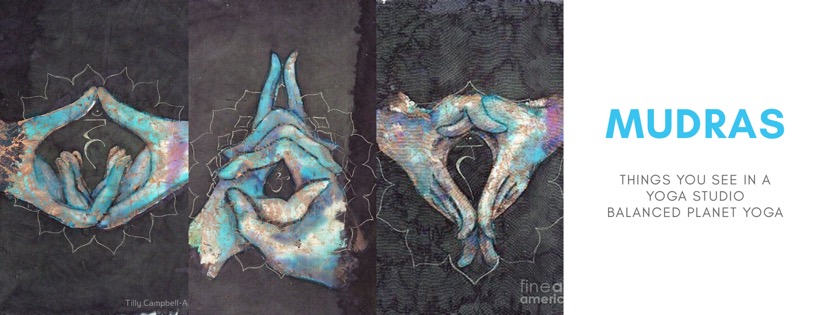Beyond the Material: Practicing Asteya in Modern Life
Asteya, or non-stealing, is a concept that’s been emphasized throughout ancient Indian texts such as the Vedas, Yoga Sutras, and the Upanishads. Gandhi even considered it so vital that he made it one of his 11 vows. But here’s the thing—Asteya goes far beyond simply not taking material possessions (we all know that’s a bad idea!). It runs much deeper and shows up in subtle, often unnoticed ways if we aren’t living a mindful, examined life.
The Root Cause of Stealing
At its core, stealing in any form arises from feelings of lack, of wanting, which leads to suffering. On the surface, someone might steal a loaf of bread because they are hungry—they lack sustenance and want to feel full. But in our everyday lives, how does stealing show up in ways we might not recognize?
Many of us feel a lack within ourselves—a hunger that has nothing to do with food. We may feel insecure, not good enough, or less than. When we believe something is missing inside of us, we begin looking outside ourselves for what we think others have: wholeness, completeness, and enoughness. And so, we steal—not just possessions, but peace, attention, or even our own potential.
How Does Stealing Show Up?
Hoarding Possessions
One way Asteya plays out is through materialism. We may not steal by taking what isn’t ours, but we hoard resources that could be shared with others who truly need them. How often do we try to fill that sense of inner emptiness with stuff? From clothes to gadgets, we often accumulate far more than we need or can truly enjoy.
Think about it—could you get rid of tons of things in your home without even noticing they’re gone? And better yet, could someone else benefit from what’s collecting dust in your closet or attic? Asteya invites us to be mindful, to lighten our load, and to share what we have so others can thrive, all while lessening our environmental footprint.
Ever done a deep closet clean-out and felt great afterward, only to fill the space right back up again? Why do we do that? It’s because our desires are endless, and we keep thinking the next purchase will fill the hole inside. But what if we stopped the cycle? What if clearing space allowed for new experiences, growth, and deeper contentment?
Stealing Peace from Others
In today’s world of social media, comparisonitis is everywhere. We see what others have, how they look, and what they’ve achieved, and we measure ourselves against them. This creates suffering within us, and sometimes, to ease our own pain, we end up stealing peace from others. Maybe we try to control, manipulate, or one-up them, or we dismiss their experiences because we feel small.
Whenever we drag others down to our level of insecurity, we’re stealing their peace because we aren’t at peace with ourselves. But once we recognize this pattern, we can break it. We can choose to celebrate others instead of competing with them.
Stealing from Ourselves
Perhaps the most subtle form of stealing is when we steal from ourselves. We do this when we don’t allow ourselves to be who we truly are, covering up our authentic selves in pursuit of acceptance, wealth, or respect. We steal our own potential, our vitality, and our joy.
We also steal time from ourselves by keeping an endless to-do list, never allowing time to reflect, rest, or process life’s experiences. Without this space, we rob ourselves of the memories, growth, and transformation that come from reflection.
Shifting Our Focus
Asteya asks us to shift our focus from others to ourselves—not in a selfish way, but in a way that encourages us to stop comparing and start developing our own gifts and talents. By focusing on what lights us up, we can live from a place of abundance and gratitude rather than lack. And when we feel abundant, we naturally share with others.
Real satisfaction doesn’t come from accumulating things, diminishing others, or pretending to be someone we’re not. It comes from leaning into our true selves, embracing life’s challenges as opportunities for growth, and living in gratitude for all we already have.
Practicing Asteya This Week
Here are some ways to practice Asteya in your daily life:
- Notice your interactions. Are you stealing someone else’s peace by not being present or invalidating their feelings?
- Declutter mindfully. If you’re hoarding possessions, could you donate items to those in need and resist the urge to replace them?
- Explore non-material abundance. Enjoy the wealth of experiences available without ownership—like libraries, nature, music, and art.
- Reflect on your to-do list. Can you remove tasks that steal time from reflection and rest?
- Create space for your dreams. What steps can you take this week to move closer to your goals?
Asteya is a big topic, but remember, you don’t have to master it overnight. Awareness is key, and as spiritual beings having a human experience, we’re constantly expanding and contracting. Give yourself grace as you practice Asteya, and notice how it begins to create more space for peace, growth, and joy in your life.
About The Author
Katie Farinas is a yoga teacher, Dharma life coach, and host of the Mom on the Verge podcast. She blends ancient yogic wisdom with modern science to help spiritually-seeking women find meaning, purpose, and joy in their lives. Through her coaching services, podcast, and workshops, Katie helps others reconnect with their true selves, heal from within, and live with greater ease.
You can explore her coaching programs, download her free Dharma discovery journal, and sign up for her inspiring newsletter at www.momontheverge.org. Tune in to the Mom on the Verge podcast for deep conversations on personal growth, motherhood, and spirituality.
Follow Katie on Instagram at @katiemomandyogi for daily insights, updates, and inspiration.






